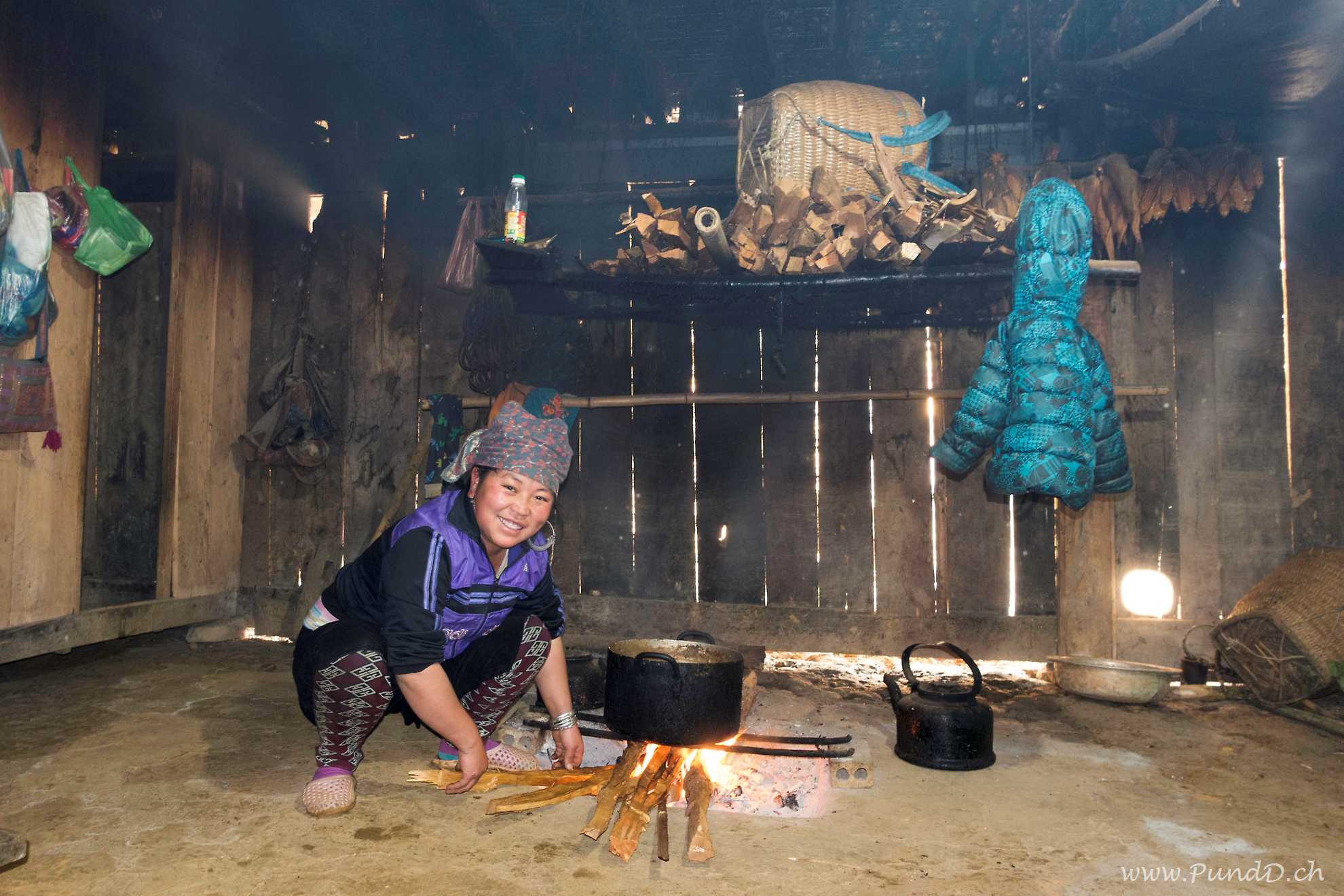Background
In the mountainous area of northern Vietnam, Lao, Thailand and southern China live several ethnic minority groups. One of the biggest of them are the H'Mong, of which more than one million live in Vietnam alone.
The H'Mong number among the poorest of the poor in Vietnam. They used to grow opium, but after this was outlawed they now have to rely solely on subsistence farming of rice. They live a rural live, growing rice, pigs and chickens for their own use. Their most valuable assets are their water buffaloes, which are used to work in the fields. They live in wooden houses without any insulation at all, even though the temperature in the mountains can be as cold as -5 °C and the houses are swathed in fog for most of the winter. Their only source of heat is the open fire in the house on which they cook. It is not surprising therefore, that the primary reason for death is pneumonia and the average life expectancy is as low as 46 years.
The H'Mong people have a rich cultural tradition. They make their own, beautiful clothes, tools and baskets. Herbal medicine and shamanism is still practiced. The people still live their live according to their tradition and venerate their ancestors.
The social enterprise ETHOS which is based in Sapa Vietnam, strive to improve the standard of living of these people without affecting their culture. The H'Mong aren't averse to new ideas and are very clever in integrating new developments in their lives. They just don't have the resources to start anything on their own.
Goal of the project 'Ethos Heater'
The project 'Ethos Heater' tackles two of the most important problems of the current way of living: smoke and cold. Cooking on the open fire may look nice on a picture, but as soon as you enter one of their houses, you are confronted with the reality: A thick cloud of smoke takes your breath away, but the room is still cold. The only warm place is direct at the fire. Bowls filled with glowing coal are used to warm other parts of the house, emitting noxious carbon monoxide. Insulating the house would make it warmer, but keep the smoke in, eventually poisoning the people inside.
The proposed solution to this problem is a fireplace with a chimney. It has to serve a double function of cooking and heating in the four cold winter months, whereas it is used for cooking only in summer. As soon as the smoke is carried out of the room through a chimney, insulation can be used to keep the warmth inside.
Previous work
The first solution was to build an added kitchen room. The kitchen was still smoky, but the rest of the house was now free of smoke. This couldn't be the final solution, considering that the H'Mong spend quite a few hours each day in the kitchen and the house was now even colder. In a second project in a different house, a huge chimney was built to vent the smoke out of the kitchen. Now the problem of the smoky kitchen was solved, but the house was still cold. The 'Ethos Heater' project aims now to solve both problems at once. Instead of building just a chimney, the heater should be an oven with heat storing capacity and a cooking surface.
The first prototype of the Ethos Heater
The first prototype of the Ethos Heater was designed and built in February 2015. It resembles a traditional masonry heater with a horizontal firebox and a cooking surface. The cooking surface is only 50 cm high, which enables family and friends to sit around the fire and talk while cooking. Heated benches provide a comfortable place to get warm. A gate valve can be opened to bypass the main oven flue and vent the hot gases directly to the chimney. This can be used to start the fire and to keep the oven reasonably cool in summer.
The fire box is constructed of fire bricks. Normal bricks are used in the rest of the oven.
Current Progress
We already built a second prototype at the plant nursery Birchhof in Switzerland. Niklas Gündel of the University of Applied Science of Northwestern Switzerland is at the moment doing his semester work on this project. His goal is to analyse this second prototype scientifically to later design an improved version of it


